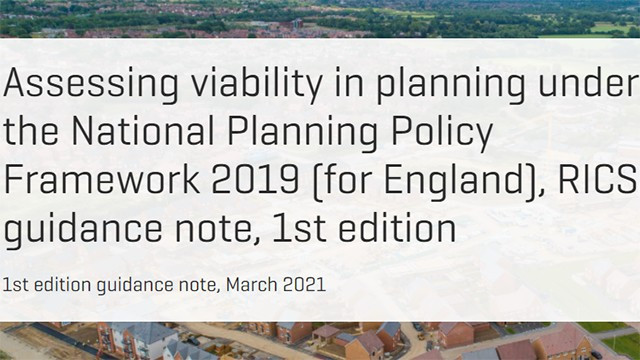


This site uses cookies that need consent.



At the beginning of April RICS published their long awaited updated guidance note on financial viability in planning. The document is titled Assessing viability in planning under the National Planning Policy Framework (NPPF) 2019 for England and comes into effect in July this year.
The guidance responds to the revision of the NPPF in 2019 and echoes what is set out in the Planning Practice Guidance (PPG) on viability also revised in 2019. The PPG (2019) is the key document with regard to financial viability in planning providing guidance on how to implement in practice the policy objectives of the NPPF (2019).
The guidance note has provided much welcome clarity on the interpretation of the PPG (2019). Continuum have identified the following important areas we anticipate to impact on how viability will be assessed at planning application stage.
The onus how now been placed firmly on the Applicant to robustly substantiate “particular circumstances” for viability to assessed at the planning application stage. This has reinforced the importance of the plan making stage in viability in planning.
Where in the past there has been a focus on “standardised” inputs to areas such as land value (BLV) and profit, there is now a clear directive that each site needs to be assessed individually due to its “unique” characteristics.
The new guidance note states that BLV should be assessed first and foremost using the Existing Use Value plus (EUV+) a premium methodology. Further guidance on assessment is provided in the form of the recommended 5 step approach.
Building on from the requirements for all viability assessments to take account of the “unique” situation of each site, the guidance note now recommends it is best practice to provide a “full quantity surveyor’s cost report”.
RICS comment in the guidance note on the use of overages (review mechanisms) echoes what is set out in the PPG (2019) stating that all non-compliant schemes should now be subject to an overage to strengthen local authorities’ ability to seek compliance over the lifetime of a project.
One interesting omission from the RICS guidance is reference to paragraph 10 of the PPG (2019) that sets out the government’s overall objective with regard to the viability. Viability seeks to “strike a balance” between the aspirations of developers and landowners whilst securing maximum benefits in the public interest through the grating of planning permission.
Continuum are experts in the field of financial viability in planning and have recently been involved in a high profile and successful inquiry at Warburton Lane where we were supported on all counts by the Inspector. The approach followed in this case and all cases advised upon by the Continuum follows the PPG (2019) and is now firmly supported by the newly published RICS guidance.
